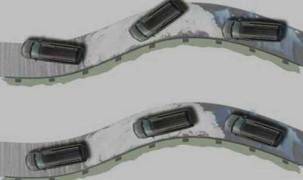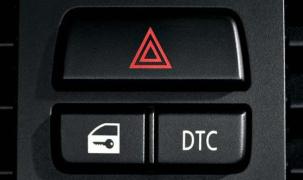| Explanation | ||||
|
Once you have an idea about traction as it relates to motor vehicles you
will know that it can be lost sometimes during severe driving conditions. It may be just one tire, two tires
or the entire car.This is the reason for traction control. A loss of traction can be very dangerous as it can lead to oversteer, understeer, skidding and longer braking distances. To correct these dangers auto manufacturers have designed and implemented several traction control devices in their vehicles. This is a computerized system consisting of sensors and employs the use of the brakes and/or the throttle. The brakes is not used to stop the vehicle but to assist the tires to regain its grip on the road if the system senses a loss of traction.
One of these 2 solutions are applied in an attempt to regain traction in that wheel as the possibility of the wheel regaining it's grip is increased when the wheel rotates at a slower pace. All traction control systems are not the same and systems usually apply one of the two solutions listed above. There are systems that work together with traction control such as Anti-lock Braking System also called ABS and there are improvements to traction control such stability control. |
| External Links |
| Detailed Explanations Videos |
|
[?] Subscribe To This Site
|
| Random Topics |
| Other random topics of WhyHighEnd? |






